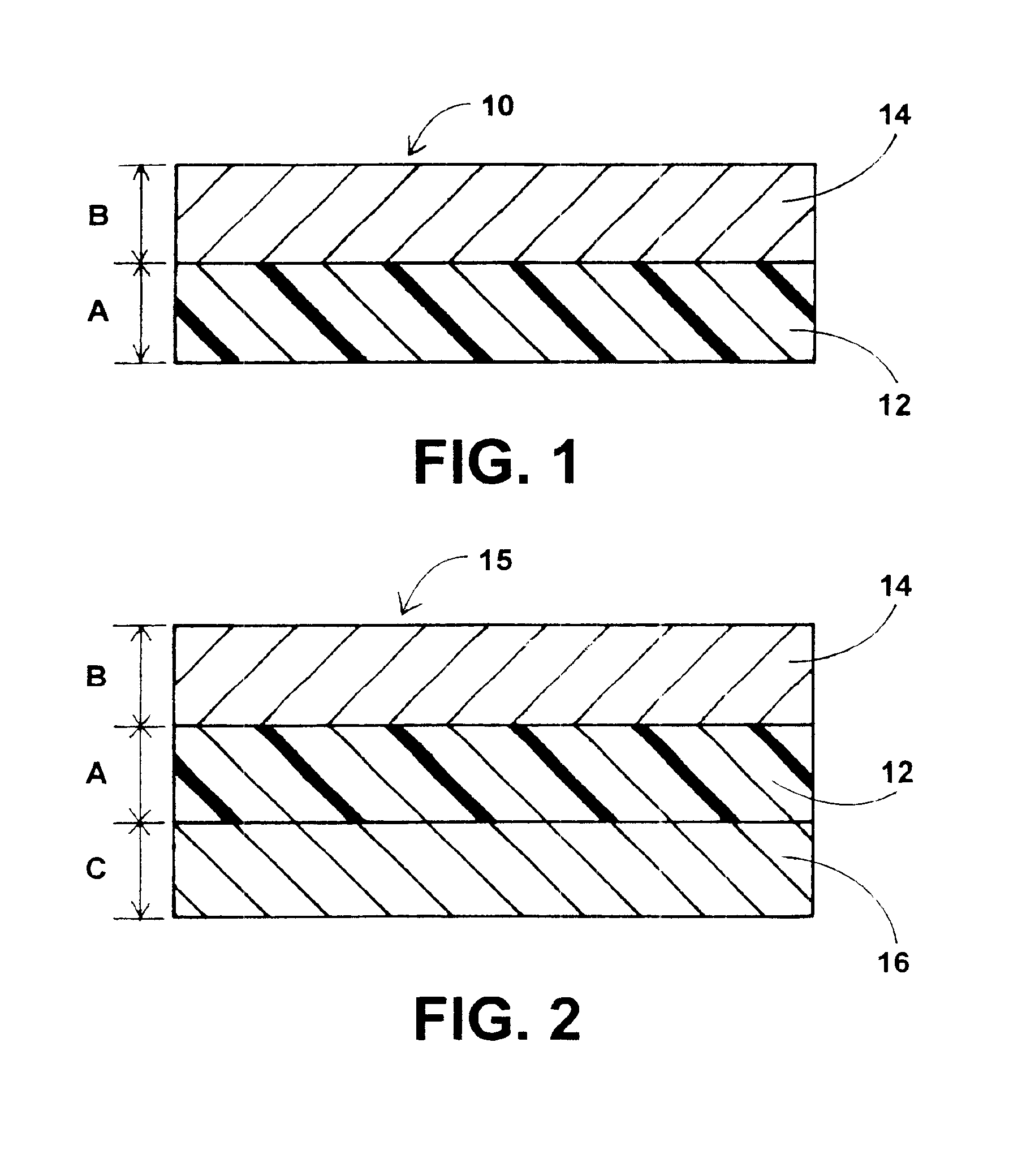Fire and thermal insulative wrap
a technology of thermal insulation and wires, applied in the direction of insulated conductors, cables, power cables, etc., can solve the problems of reducing the electrical performance of materials, serious compromise of the overall performance characteristics of the system, and hazard to persons and equipment, so as to prevent flame spread, low cost, and low cost
- Summary
- Abstract
- Description
- Claims
- Application Information
AI Technical Summary
Benefits of technology
Problems solved by technology
Method used
Image
Examples
Embodiment Construction
The fire and thermal insulative protective wraps, tapes or sheets of this invention are illustrated in FIG. 1 and FIG. 2. FIG. 1 shows a fire and thermal insulative dual layer sheet, wrap or tape, 10, comprise of a material support substrate backing, 12, of thickness A. In a preferred embodiment a support backing, 12, is a flexible woven fiber glass tape supplied by General Electric Company, Schenectady, N.Y., or the T & F Division of CHR Industries / Furon Inc. Wayne, N.J. However, the support backing may be of other flexible materials that can be formed to provide tapes or wraps. Materials include but are not limited to plastic films, such as, PTFE (Teflon*), Polyimide (Kapton*), Silicones, polyesters (Mylar*) and UHMW Polyolefin. Paper tape is also a desirable support backing. The most preferred backing substrates are woven fiber glass fabric (coated or uncoated and paper.
* Refer to trademark designations
A second layer of thickness B, 14, completes the dual layer construction. Thi...
PUM
| Property | Measurement | Unit |
|---|---|---|
| Temperature | aaaaa | aaaaa |
| Length | aaaaa | aaaaa |
| Thickness | aaaaa | aaaaa |
Abstract
Description
Claims
Application Information
 Login to View More
Login to View More - R&D
- Intellectual Property
- Life Sciences
- Materials
- Tech Scout
- Unparalleled Data Quality
- Higher Quality Content
- 60% Fewer Hallucinations
Browse by: Latest US Patents, China's latest patents, Technical Efficacy Thesaurus, Application Domain, Technology Topic, Popular Technical Reports.
© 2025 PatSnap. All rights reserved.Legal|Privacy policy|Modern Slavery Act Transparency Statement|Sitemap|About US| Contact US: help@patsnap.com



